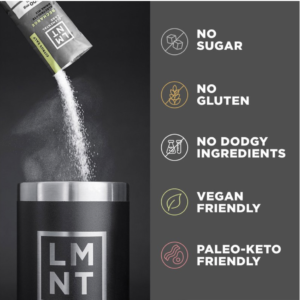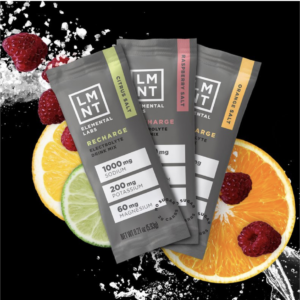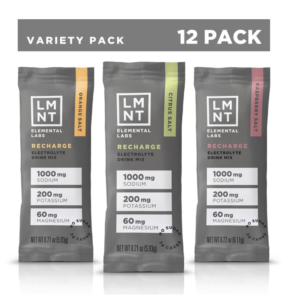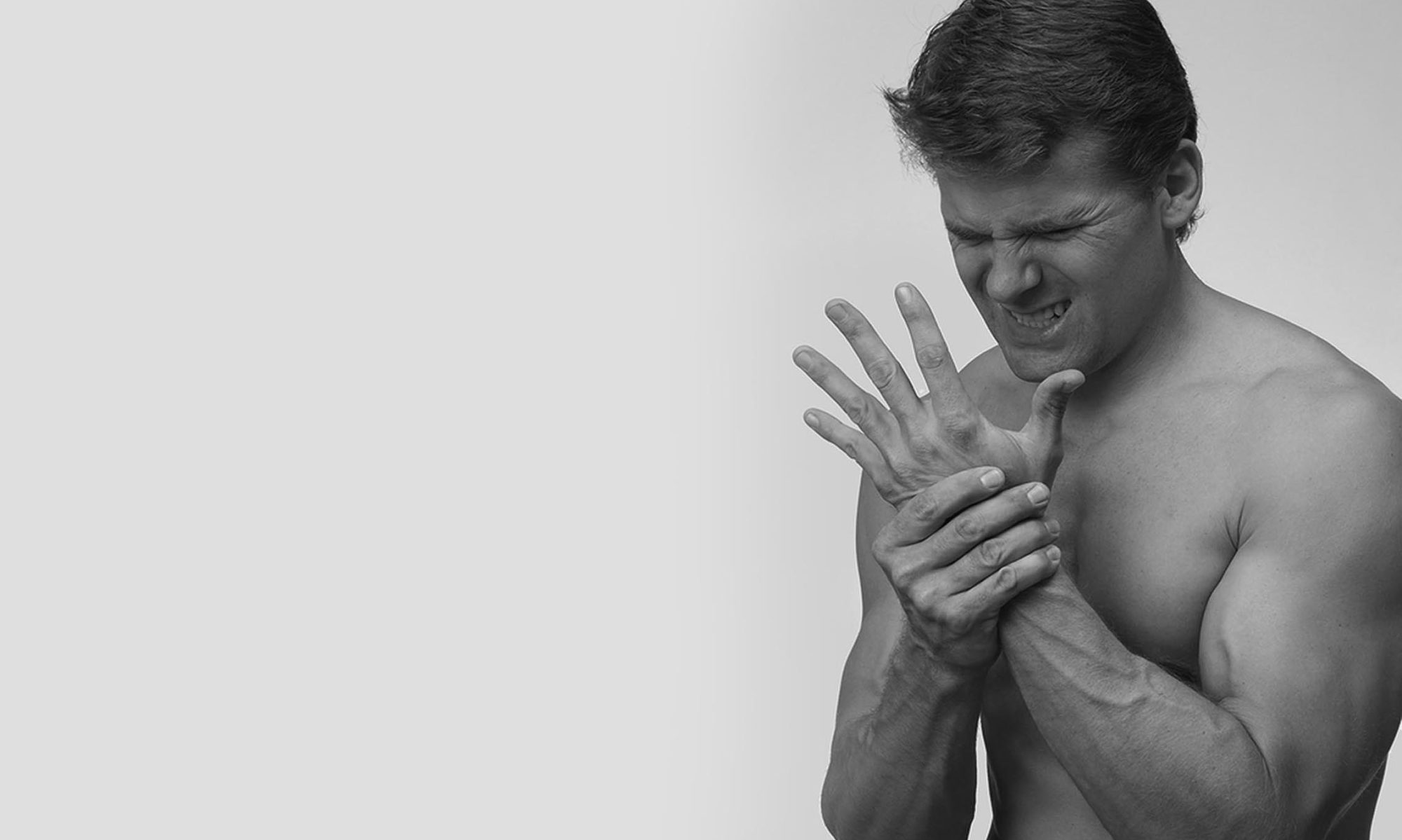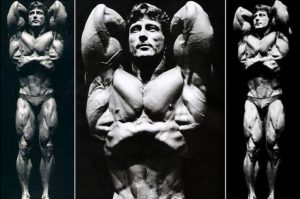I spend a lot of time talking about how to prevent tendon issues on this blog, but as you get older it’s equally important to prevent joint problems. So in this post, I’m going to tell you about an old program that will give you a great workout while simultaneously giving your joints and tendons a break: The Hundreds Program.
The Hundreds Program, or just “Hundreds” for short, came from the fertile mind of a guy named Jeff Feliciano back in the 1980s. I lived in Southern California at that time, and got to know Jeff personally when I joined a gym where he was a personal trainer. Jeff was a super nice guy who was heavily into learning about bodybuilding techniques and trying to improve training programs. He knew a lot about both nutrition and training, and I made some of the best and fastest progress of my life using his advice.
Jeff contributed to the muscle magazines for a while, but Hundreds was probably the single thing that he was best known for. Unfortunately, as a niche program that could only be used once in a while, Hundreds fell into disuse almost immediately. It’s not something you can do often, and if you’re a young trainee, once you’ve gone through it once, you’ve pretty much gotten all you can out of it. But for older trainees, Hundreds (with a few minor modifications) can be a useful and productive program much more frequently.
THE PROGRAM
So here’s the program, as Jeff originally wrote it and as best I can remember it 30 years after the fact:
1. Pick a very light weight, like about 15% of your 1RM for upper body, and about 25% of your 1RM for lower body.
2. Try to get 100 reps in a row with that weight. Probably you will not be able to do this.
3. Whatever number you fail at, take a ten-second break and then do more reps. Continue until you hit 100.
3. Write down the number of reps that you actually get. (It is essential to keep a training log with this program.)
4. If you get 100 reps in one continuous set, up the weight slightly the next workout. If not, stay at the same weight and try to beat your previous number(s) your next workout.
5. Rinse and repeat.
So here’s a concrete example of Hundreds in action. Let’s say that you want to do Leg Presses. You choose 40kgs as your weight and try to get 100 reps, but you fail at rep #68. Take a ten-second rest, then do more reps. You fail a second time at rep #89. You take another ten-second break and then do the last 11 reps, making 100 in all. In your training log, you would write down Leg Press: 40kgs x 68-89-100. After that, you would put a small circle (like a degree mark) indicating that the weight stays the same for the next workout.
The next workout would be about two to four days later, depending on your recovery ability, and let’s say that this time you use 40kgs and get 79 reps before you fail. After a ten-second break, you then get the last 21 reps, making 100. So you write down 40kgs x 79-100, again with the little circle. Next workout, you fail at 88, so 88-100 and the circle. And the next workout after that, you get a set of 100 straight reps. So you would write down 40kgs x 100 and put an upward arrow indicating that the next workout you want to go up in weight.
In Jeff’s original conception, you were supposed to add 5kgs to leg exercises and about 2.5 kgs to upper-body exercises I think that for most older trainees, this is going to be overly optimistic. Just add a kilo or two and that will be enough to provide a decent progression.
Hundreds is a full-body program, meaning that you work your entire body each time you go to the gym. Given this, it makes sense to choose compound exercises like bench presses and rows rather than isolation movements like barbell curls that only work one muscle at a time. So a typical workout might be:
Leg press
Calf raises
Bench press
Pulldowns
This is going to be the core of your workout. If you want to add some abdominal, forearm or shoulder work on top of that, feel free, but I think it’s going to be hard to get 100 reps for those bodyparts. Personally I just go for about 20 rep sets for shoulders and 40-50 rep sets for crunches and the like.
ADVANTAGES OF THE HUNDREDS PROGRAM
So what are the advantages of The Hundreds Program? First, it will likely be a very different workout from what you’re doing now. Everyone knows that the best workout is the one that you aren’t doing, and hardly anyone is doing Hundreds. So just the shock of a new program will probably give your body a boost.
Second, since you’re forced to use such light weights, Hundreds will give your joints and tendons a rest. Lifting heavy is fun, but as we get older it becomes less and less cost-effective due to the chance of injury. I’m 57 as I write this, and I only go really heavy about once every four to five weeks on any given exercise. I do think that heavy lifting is important for everyone, including older lifters, but you have to work within your capacity. And as we all know, that capacity dwindles with age.
And third, since you are literally doing one set for each exercise, a Hundreds workout doesn’t take that much time to complete.
DISADVANTAGES
Are there any disadvantages to The Hundreds Program? Well, you won’t develop much in the way of high-end strength using this program. It requires a little bit of a different mindset to grind through 100-rep sets than your “normal” weight training workout. And you certainly won’t get any ego satisfaction using baby weights.
One thing to remember: If you try this program, be careful about doing Hundreds on a machine that locks you into a certain “groove”. Something like a cable pulldown machine is fine, but I would avoid Smith Machines and the like. With a free weight or cable, each rep you perform is going to be slightly different. But on a machine that locks you into a certain track, there is so little variation from rep to rep that there is a higher risk of developing a repetitive stress injury. If you do have to use something like a leg press or some machine to bench press on, be sure to vary your foot or hand placement a little from week to week.
So that’s it. I would say that probably most young trainees are going to get as much out of Hundreds as they ever will by using the program for about two months. And once they’ve done it once, they probably won’t be in any hurry to do it again. But for us older folks, doing a month of Hundreds once or twice a year can really result in some good “gains” in the form of fully recovered tendons and joints. And that’s certainly a plus for anyone.
